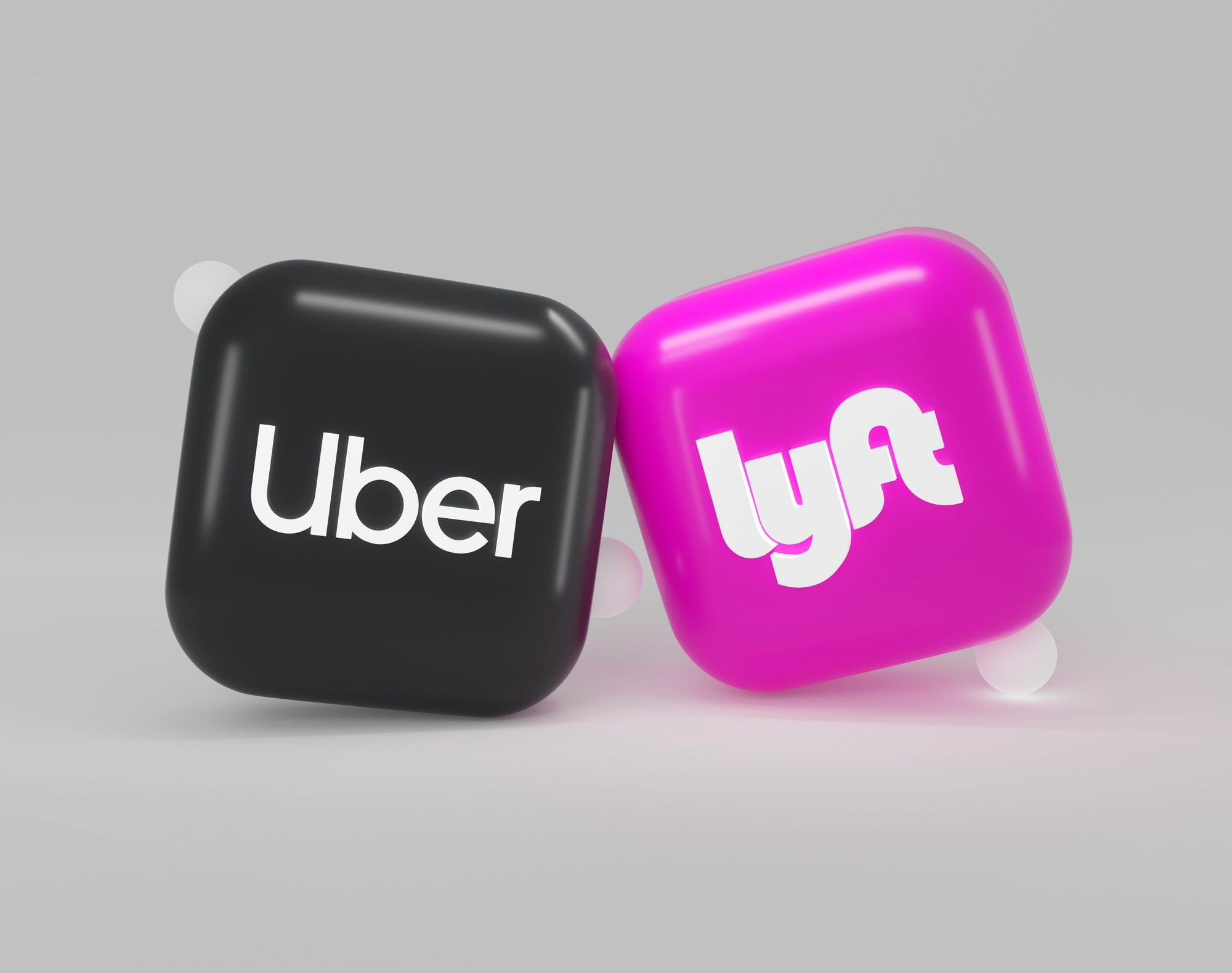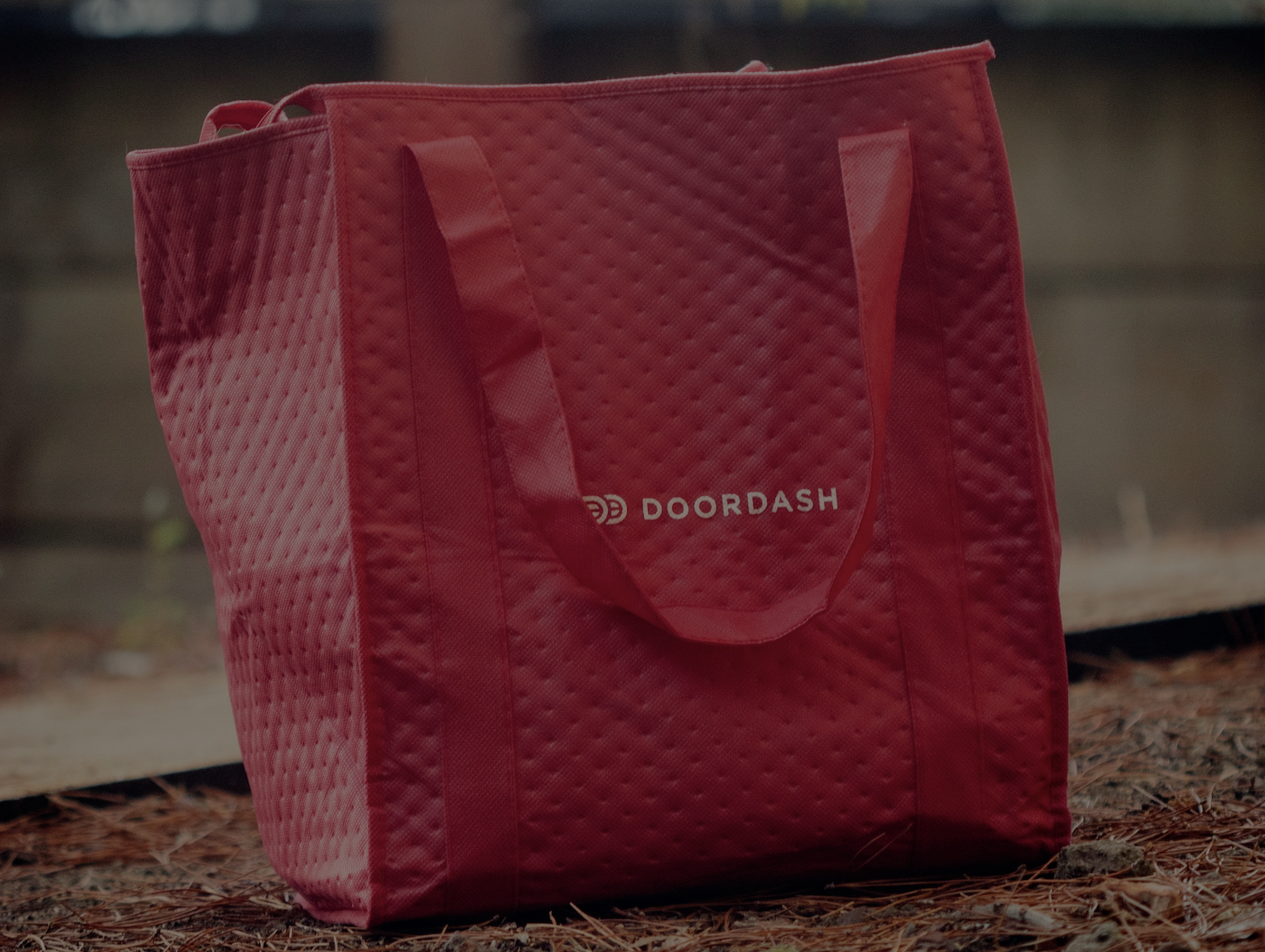Web3's Sharing Economy

Gig workers set off a revolution, giving new meaning to the word “self-employment.” Welcome to the sharing economy, an economy teeming with a gratifying sense of liberty and freelancing creativity.
As of 2022, “There are currently around 59 million gig workers. That's around 36% of all US employees.”—Zety
Given the freedom it provides with where, when, and how long an individual decides to work, it’s no surprise that the sharing economy is growing tremendously: “estimated to grow from $14 billion in 2014 to $335 billion by 2025” (brookings.edu). Big names in the sharing economy—Uber, Doordash, Airbnb, and the like—have become everyday terminology.
The web3 era could be the sharing economy’s cherry on top. Gig work is about independence, and web3 is about decentralization; together, they present more opportunities for businesses and independent contractors. Web3 can expand the sharing economy by streamlining the existing technology with which the sharing economy operates. The potential for impact is especially notable in the ridesharing, food delivery, and home sharing sectors—and web3 platforms are on the rise in these industries.
What's Inside
What is Web3?
Web3, or Web 3.0, is different from the two versions before it: Web 1.0 and Web 2.0.
Rewind back to 1989, the age of Web 1.0, when the network was a government-owned experiment. Until 2005, the internet had been a mesh of Wikipedia and Britannica pages. There was an emphasis on users acquiring information.
Today’s Web 2.0 connects the world. People can interact with and contribute content through social media platforms. In fact, Web 2.0 jumpstarted the entire gig economy. Talented freelancers and ambitious contractors have a medium to do what they love—even earn a paycheck—through sharing information.
Tomorrow’s Web 3.0 encompasses all of the above—acquiring and sharing information—and more. It’s a smarter web enhanced with machine learning and artificial intelligence. The Web 3.0 era involves high-tech computers extracting and consolidating information for users.

Learn what Web3 actually looks like. “I <3 U” being processed as “I love you” is a short and sweet example of Web3’s capabilities.
Web3 will do more. And, it will do more for gig workers and businesses seeking ways to provide value to consumers.

Ridesharing and Web3
With ridesharing, on-demand rides are a few clicks away. For better or for worse, hopping into a stranger’s vehicle has become a reality. In the US, Uber and Lyft capture the majority of the ridesharing market.
Current Issues with Ridesharing
Despite its relevance in everyday life, ridesharing apps see drawbacks associated with web2’s deep-rooted centralization; companies behind the apps have the authority to make decisions that benefit them but perhaps not the users. This disparity in control leads to clashing desires and a conflict in stakeholders’ interests. Below are current issues with ridesharing, much of which stem from centralization.
Middlemen-controlled relationships between riders and drivers. The popular ridesharing apps are not self-governing. Central entities—organizations like Uber and Lyft—run the apps, oversee operations, and are entirely involved with connecting drivers and riders.
Price manipulation. According to a Forbes article, “Uber’s New Math,” Uber “has been raising US ride-hail prices four times faster than the rate of inflation [as of 2023] while squeezing driver pay in its quest for profitability.” While Uber may have done so to protect itself against macroeconomic uncertainty, price modification is unpredictable and to the dismay of riders and drivers.
“Uber is in an ideal position to practice what economists call first-order price discrimination.”—Forbes
Data collection and potential for exploitation. Today’s top ridesharing competitors utilize algorithms and data collection for success. In fact, both Uber and Lyft can manipulate prices thanks to their repertoire of behavioral data on consumers and drivers. Uber even deploys psychological tactics to have a tighter grip on driver availability: “the company has exploited some people’s tendency to set earnings goals—alerting them that they are ever so close to hitting a precious target when they try to log off” (nytimes.com).

Identity fraud. Ridesharing apps are susceptible to fraudulent activity. For instance, drivers may steal identities to create fake accounts despite ID verification efforts by ridesharing companies.
Vulnerability to attacks. A bona fide article mentions the theme of “poor performance, single point of failure, lack of flexibility and transparency, vulnerability to malicious attacks and data theft” within ridesharing services (mdpi.com). Indeed, Uber suffered a data breach in the fall of 2022 when a hacker bypassed Uber’s security credentials and gained access to company data and systems.
Web3 Impact on Ridesharing
Blockchain-based web3 apps can target many of the listed issues within the ridesharing environment.

Check me out for the fundamentals of blockchain.
Lower fees. Blockchain’s transparent peer-to-peer network would seamlessly connect riders with drivers without a third party. By allowing them to transact directly with one another, blockchain would eliminate the high service fees involved with common ridesharing apps. This could kill companies that dominate today—and their source of profit.
Automated transactions. A web3 ridesharing system would make transactions much faster by cutting out third parties from the process with smart contracts. A smart contract is a fancy term for a simple concept: lines of code that allow transactions and driver-rider pairing to execute based on predefined rules—rules that work for both the rider and driver.
Accurate location tracking. Sure, Uber may already use an interface—Google Maps API—to update routes in real time. However, blockchain-based apps could offer the same feature. In fact, a group of developers successfully incorporated Google Maps API into their own Ethereum-based ridesharing system “to pinpoint the exact departure/destination places… reducing the possibility of dispute about locations” (mdpi.com). Central entities won't be the only players with accurate location tracking.
Identity verification. Trust between riders and drivers is a huge point of concern in ridesharing apps. Besides automating transactions, smart contracts can also verify digital user identities on ridesharing apps. One study experimented with smart contracts in ridesharing and found it could be used to “record key information that can identify users related to each sharing contract. The key information in SC includes the users’ IDs and their Ethereum addresses.” The impact? Improved safety across all ridesharing systems.
AI application and smart routing. Web3-based artificial intelligence systems can pair drivers and riders based on the most efficient routes that consume the least energy. The bigger picture involves reduced carbon emissions and smart, environment-friendly ridesharing systems. Indeed, “adopting blockchain and smart contract technologies, this layered architecture can… achieve sustainability by reducing traffic congestion, energy consumption, and greenhouse gas emissions,” as forwarded by "Blockchain Meets Sharing Economy."

Web3 Ridesharing Solutions Today
Blockchain-based ridesharing apps are constantly being engineered so mainstream adoption may be a reality. Consider the real time examples of Arcade City, La’Zooz, and Drife.
Arcade City is an Ethereum-run decentralized ridesharing app that directly connects drivers with riders. Arcade City’s name fits its video-game-like concept—where drivers and riders can level up and advance in the app. Those with higher levels have higher weights when rating rides and voting within the app. The app also offers riders and drivers the opportunity to negotiate prices.
La’Zooz is a blockchain-based ridesharing platform that allows people with private cars to share their vehicle with others traveling the same route, thus maximizing route efficiency. La’Zooz users can volunteer to give people rides at a later date for a cryptocurrency reward.
Drife is an app that is turning heads on the other side of the globe. The web3 ride-hailing app in India lets drivers keep the entire fare that riders pay. The catch? Drivers must pay a monthly subscription fee to use the app. The upside of Drife is that drivers have the liberty of determining how much they’d like to profit beyond the point of breakeven from the monthly subscription fee.
“A base fare is set based on the class of vehicle and the distance of the trip, but after that riders can boost the amount they are willing to pay to attract more drivers. Drivers can also make counteroffers. The rider then chooses who to go with based either on price or driver ratings. This means pricing is purely market-driven, and because Drife isn’t taking a cut, fares should be cheaper than alternatives, says Sheikh.”

Food Delivery and Web3
Food delivery is a modern-day staple. The pandemic spurred its growth as a sector and proliferated the food delivery trend. Names like Doordash and GrubHub are here to stay in the must-have app bundle simply because they make life easier.
Current Issues with Food Delivery
The food delivery sector takes up a hefty piece of the sharing economy pie, but it has its fair share of limitations.
High fees. In the eyes of both restaurants and customers, food delivery services have high service fees. There is a charge for every step: food commission, service, delivery, marketing, plus tips upon delivery. Consumers suffer from increased costs and businesses from lowered profits.
“Delivery-app companies try to cook up secret sauce for profitability; Grubhub calls transporting food from restaurants a ‘crummy business.’”—Wall Street Journal
Poor order traceability and restaurant sanitation. It can be difficult to sense a restaurant’s dirty walls behind the walls of an app. Besides the standard of sanitation within restaurants, the supply chain process remains a gray area for customers curious about food safety.
Unreliable delivery and poor handling. Customers experience delayed or lost orders, and dissatisfaction translates to negative reviews. Beyond that, users question proper handling upon delivery. A recent survey reports “90% of Americans have received the wrong food order from a restaurant or grocery store, and 54% of Americans have suspected their delivery driver of consuming parts of their food or beverage prior to delivery.”

Lack of unified communication across all parties. With current food delivery apps, users can see the real time status of their delivery driver. However, the delivery process may be inefficient, since restaurants may not be notified of an incoming driver and vice versa: (1) a driver may arrive at the restaurant before the food is ready or (2) the restaurant may whip up the order early, in which case the food—cold by the counter—pensively waits to be picked up.
Long wait times. Despite scheduling for a certain time window, users may wait long periods for their orders. This is especially true for metropolitan residents that battle traffic congestion or those at harder-to-reach locations. One post mentions that the average delivery time for Doordash was 37 minutes in 2019, and upward outliers include a waiting time of 80 minutes.
Web3 Impact on Food Delivery
A wonderful web3 world of blockchain integration, drones, and autonomous vehicles would evaporate some of the issues currently vexing the food delivery industry.
Lower fees. Decentralized food delivery platforms built on web3 and blockchain technology can significantly reduce users’ consumption costs since no centralized entity takes a cut of every transaction—a sigh of relief from high operating fees.
Greater food safety. With blockchain integration, restaurants that wish to register on food delivery platforms could be required to verify that all regulatory standards have been met. Indeed, a paper confirms that “blockchain helps to uphold the strict safety standards of the food industry… any regulatory violations can be tracked before commissions are paid.” Furthermore, restaurants will have the power to trace the supply chain of food items, ensuring that the food delivered is fresh, of high quality, and safe to consume.

Reliable delivery and IoT sensors. A case from FedEx describes blockchain’s impact on commercial shipping, which can also be applied to food delivery. It advances the idea of proof-of-delivery: a concept where payment to the seller is locked until the food arrives. How does it work? Smart contracts take a user’s payment and keep it cozy in escrow until “proof-of-delivery” is captured. There’s also a solution to food being tampered with before delivery. A noteworthy study covers IoT sensors that can ensure proper handling while a driver is en route as well as detect opened packages upon food delivery.
Online food delivery is reimagined in a future where a “driver’s reputation ceases to come from delivery time and instead it is determined by the LPWAN of Internet of Things (IoT) sensors that monitor food transportation quality and characteristics such as temperature and vibration inside the transport container” (Tokkozhina, Mataloto, Martins & Ferreira).
Greater transparency. While current technology tracks your food and stores transaction data, blockchain expands this data window to the peripherals of the user, the delivery driver, and the restaurant because the blockchain ledgers act as a single source of truth (fedex.com). In other words, all parties see each step of the process simultaneously. This real time record ensures smooth operations—benefiting businesses—and provides users a mind-easing to track the entirety of the food delivery process until it ultimately reaches their homes.
Drones, autonomous vehicles, and robots. Over time, drones and self-driving vehicles may become the norm as machine learning and artificial intelligence advance. Drones would thwart the time drivers would typically spend in traffic, with the added flair of fewer carbon emissions. Meanwhile, investments in autonomous vehicles may help restaurants as they race to capture market share in the food delivery industry because it would shift their reliance on gig workers. While gig workers get the short end of the stick, restaurants gain greater independence and customers benefit from greater affordability. An article on self-driving robots for food delivery from Berkeley’s California Management Review mentions that “self-driving vehicles and sidewalk robots can reduce last-mile delivery costs down by 40 percent.”

Web3 Food Delivery Solutions Today
Web3 solutions have begun making strong headwinds in the food delivery sector. Consider companies like Uber Eats, Nuro, and Flytrex.
Uber Eats is Uber’s subsidiary and runs on Hyperledger Sawtooth Blockchain. The perks of blockchain integration in Uber Eats include strengthened security, P2P protocol, accurate delivery scheduling, real time order tracking, and multiple payment options for easier ordering.
Nuro is a robotics company for driverless vehicles and is transforming local commerce through innovative curbside delivery. Nuro received funding from Chipotle and has partnered with Domino’s and Uber Eats thus far. The latter is a more recent, 10-year partnership that involves making deliveries in Texas and plans to expand into California.
Flytrex has a first-mover advantage in drone deliveries and has already seen significant activity from restaurants. In 2022, Flytrex partnered with Brinker International—the holding company of Chili’s Grill & Bar and Maggiano’s—and even well-known sandwich chain Jersey Mike’s.

Home Sharing and Web3
Home sharing is another prominent sector that has opened up numerous job opportunities for independent contractors—whether it’s flipping properties full-time or just a way to earn extra cash. Though Airbnb has the strongest grip on the market, Vrbo is a well-known name in the home sharing space.
Current Issues with Home Sharing
Home sharing faces its own set of problems. It’s a far cry from waiting out a bad Uber ride or dealing with drink leaks during delivery. Listed below are common issues related to home sharing.
Lack of security and safety regulations. More likely than not, properties listed on Airbnb are private, meaning a homeowner may miss dangers like fire hazards. Hazards are limitless, “whether it’s bed bugs [or] loaded guns” (bloomberg.com).

Exaggerated advertisement and bait-and-switch. Some hosts may falsely represent their properties to lure guests. Or, they may conceal information to maintain business. For example, imagine a property listed on Airbnb highlights the location's jacuzzi despite it not working at the time of listing.
Lack of transparency. Home-sharing platforms have been criticized for lack of transparency in fees and pricing, as well as the accuracy of the information presented on the platform. And, companies like Airbnb and Vrbo may ban certain users from the platforms without adequate notice or justification. This disrupts livelihood.
Theft and crime. Illegal activities are inevitable, from stolen cash or valuables to graver crimes such as kidnapping. It’s alarming and nothing is off the table. There are extreme, messed-up cases where Airbnb agents “had to hire body-fluid crews to clean blood off carpets, arrange for contractors to cover bullet holes in walls, and deal with hosts who discover dismembered human remains” (bloomberg.com).
“In 2011 a host in San Francisco blogged about returning from a work trip to find her home ransacked. Her ‘guests’ had trashed her clothes, burned her belongings, and smashed a hole through a locked closet door to steal her passport, credit card, laptop, and hard drives, as well as her grandmother’s jewelry.”—Bloomberg
Timely legal battles. Guests can sue hosts and vice versa. Hosts can sue guests they have rented their properties for injury, property damage, etc. If and when a lawsuit arises, dispute resolution can be inefficient and timely.
Web3 Impact on Home Sharing
Both blockchain and IoT devices may address the security issues currently plaguing the home sharing sector, as well as optimize other parts of the home sharing process.
Identity verification. Trust is essential for home-sharing apps, as hosts and guests need to trust each other for a positive experience. At the end of the day, even blockchain can’t remove bad actors—and seriously bad actors in earlier examples—from using home sharing platforms. However, the technology can up the ante with stringent identity verification measures. According to a study by Cornell Research, blockchain can provide foolproof verifiable credentials. Perhaps the guest-host agreement will be finalized after appropriate documents and IDs have been provided.
Strengthened security. One paper advances how IoT devices “smoke sensors, door/window sensors, motion sensors, security systems, and cameras [can be associated] with safety and security.” This is advantageous for both parties, as smart devices can help hosts make sure guests are not overstepping any boundaries, while guests feel safer from property-surrounding security cameras, even more so if they are not familiar with the neighborhood and how safe it is.

Faster transactions. Smart contracts can expedite the transaction process by automating agreements between hosts and guests. And, escrow smart contracts can incentivize accountability by only accepting and releasing payments to either party after all boxes have been checked.
Decreased fees. Airbnb profits from charging hosts and guests for using its platform, customer support, and payment processing. However, web3 platforms will allow users to co-operate home sharing platforms. So, hosts may decide how much they make and guests how much they pay, all the while allocating just enough to cover the platform’s operating expenses. In this scenario, the middleman is no longer needed and monopolistic rent-seeking companies are evicted.
Efficient dispute resolution. Blockchain can enable more efficient dispute resolution, reducing the need for expensive and time-consuming legal battles. Plus, web3 home sharing alternatives will infuse a co-op model, where members can vote on key company decisions and platform governance. Put differently, platforms may become autonomous and users may naturally weed out candidates misusing the platform. Banning bad actors in this democratic system will be easier with blockchain technology that makes data and user track records more transparent.
Web3 Home Sharing Solutions Today
Web3 home sharing platforms are a little tricky; many that have popped up over the years saw short-lived successes and eventually fizzled out. That said, consider platforms Travala and Dtravel.
Travala is a blockchain-based travel booking platform that is cryptocurrency friendly and offers tokenized incentives. Although it primarily pertains to hotel bookings, Travala’s reach demonstrates how relevant blockchain application in travel is today.
Dtravel is Travala’s subsidiary and is a decentralized home sharing platform that facilitates both short and long-term stays. Dtravel includes its community of users in the company’s decision-making process regarding governance, operations, and overall direction as a platform. Cryptocurrency is used as a form of payment on the platform, and hosts and guests may even be rewarded for their contributions through token rewards and travel benefits.

Conclusion
Blockchain, IoT, and machine learning are pillars of the web3 era. As a whole, web3 will revolutionize the sharing economy by unlocking unique opportunities for both businesses and independent contractors. This is true across all three sectors covered—ridesharing, food delivery, and home sharing. Common themes include greater data transparency, decreased fees, and strengthened security. However, that’s only in general terms.
The true impact of web3 is unforeseeable. It may be hard to render how blockchain-based platforms or impressive IoT devices may fuse into the sharing economy. However, web3 isn’t a roughly sketched concept or dream of the future; real time cases and business-related opportunities actively exist, grow, and enter the radars of all those in the sharing economy.
References and Credits
- Aydar, Mehmet, et al. “Towards a Blockchain Based Digital Identity Verification, Record Attestation and Record Sharing System.” Arxiv.org, 23 June 2020.
- Carville, Olivia. “Inside Airbnb's 'Black Box' Safety Team: Company Spends Millions on Payouts.” Bloomberg.com, Bloomberg, 15 June 2021.
- Chang, S.E., C.-Y. Chang. "Application of Blockchain Technology to Smart City Service: A Case of Ridesharing," 3 Aug. 2018.
- Chang, S.E., Chang, E.C., Chen, Y. Blockchain Meets Sharing Economy: A Case of Smart Contract Enabled Ridesharing Service. Sustainability 2022, 14, 13732.
- Hossain, Mokter. “Self-Driving Robots: A Revolution in the Local Delivery.” California Management Review, 5 Apr. 2022.
- Rana, Preetika, and Heather Haddon. “Doordash and Uber Eats Are Hot. They're Still Not Making Money.” The Wall Street Journal, Dow Jones & Company, 31 May 2021.
- Scheiber, Noam. “How Uber Uses Psychological Tricks to Push Its Drivers' Buttons.” The New York Times, The New York Times, 2 Apr. 2017.
- Sherman, Len. “Uber's New Math: Increase Prices and Squeeze Driver Pay.” Forbes, Forbes Magazine, 19 Jan. 2023.
- Shrirang Mare, et al. “Smart Devices in Airbnbs: Considering Privacy and Security for both Guests and Hosts.” 8 Aug. 2019.
- Tokkozhina, U., Mataloto, B.M., Martins, A.L. et al. Decentralizing Online Food Delivery Services: A Blockchain and IoT Model for Smart Cities. Mobile Netw Appl (2023).
- Zhang, L.; Kim, D. A Peer-to-Peer Smart Food Delivery Platform Based on Smart Contract. Electronics 2022, 11, 1806.
- Image by mamewmy on Freepik
- Image by Freepik
- Image by Freepik

